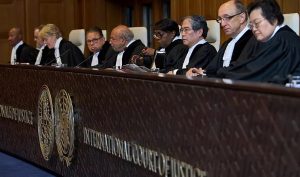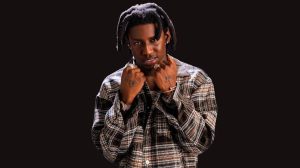Defendants face judgement for actions that led to beheading of French teacher
4 min readEight people accused of abetting the jihadist murder of French teacher Samuel Paty are awaiting their verdict after a six-week trial in a Paris court. The defendants include the father of a schoolgirl whose false claim about Paty’s alleged discrimination against Muslims set in motion the events that led to his beheading in October 2020. Also on trial are a Muslim activist who led an online campaign against Paty, two childhood friends of the Chechen-born killer, Abdoullakh Anzorov, who allegedly helped him acquire weapons, and four radicalized men with whom he exchanged messages on social media.
Anzorov was shot dead by police shortly after murdering the 47-year-old history-geography teacher outside his school in Conflans-Saint-Honorine, a suburb of Paris. The attack was spurred by rumors circulating on the internet that Paty had shown offensive images of the Prophet Muhammad in a lesson on freedom of speech. In reality, Paty had only shown one of the controversial images, first published by Charlie Hebdo, and advised his students to avert their eyes if they felt uncomfortable.
The schoolgirl, identified as Z. Chnina, was not even present in class at the time but falsely told her father she had been punished for raising an objection. Her father, Brahim Chnina, later posted videos online denouncing Paty. He enlisted the help of activist Abdelhakim Sefrioui to spread the campaign via social media. Although neither Chnina nor Sefrioui directly called for violence, the prosecution argues that their actions contributed to the tragedy, leading to the charge of “terrorist association.”
The court trial centered on whether people who had no prior knowledge of the attack or its perpetrator could still be held accountable for their words, which may have indirectly incited violence. Prosecution lawyers requested sentences ranging from 18 months to 16 years for the accused, asserting that their actions played a role in the events leading to Paty’s death. However, the prosecution’s refusal to seek maximum sentences and the downgrading of some charges angered Paty’s family.
In the course of the trial, 17-year-old Z. Chnina testified publicly for the first time, expressing remorse. She had previously been given a suspended sentence for slander in a juvenile court, which had been conducted behind closed doors. “I want to apologize to all the [Paty family] because were it not for my lies they would not be here today,” she said, tearfully. “And I want to apologize to my father because when he made the video, it was partly because of my lie.”
The prosecution argued that while Chnina and Sefrioui did not directly want Paty’s death, they knew the risks of their campaign, which might lead to violent outcomes. “No one is saying they wanted the death of Samuel Paty, but by lighting 1,000 digital fuses, they knew that one of them would lead to jihadist violence,” the prosecution stated. This assertion hinges on the idea that the defendants should have been aware of the potential consequences of their actions, even though they did not explicitly call for Paty’s murder.
The trial also addressed the roles of Anzorov’s two childhood friends, who accompanied him to buy a knife and a fake gun, and one of whom drove him to the school on the day of the attack. Though neither defendant was a radicalized Muslim, the prosecution initially charged them with “complicity in a terrorist attack,” a charge that could have carried a life sentence. However, the charge was downgraded to “terrorist association,” as it was not established that they were aware of Anzorov’s plans.
In addition, four other accused individuals had exchanged messages with Anzorov on online chatlines. None of these exchanges revealed his intentions to kill Paty, but one defendant, a convert to Islam named Priscilla Mangel, admitted making “provocative” remarks online about Paty’s case. Mangel stated that she did not know Anzorov’s intentions and that her online conversations had seemed like “anodyne discussions with an anonymous person.”
For the defense lawyers, the key argument was that none of the accused would have been criminally charged if not for the murder of Paty. They contend that speech, even if provocative, should not be deemed illegal unless it leads directly to criminal actions. The case presents a complex legal dilemma: when, if ever, can speech be considered an incitement to terrorism, and where does responsibility lie for the consequences of words spoken or written?
The trial has placed a spotlight on the legal boundaries of free speech and its potential to incite violence, as well as the extent to which individuals can be held accountable for their role in a terrorist attack, even when they may not have been directly involved in planning or carrying it out. As the verdicts approach, the court will have to determine whether the defendants’ actions were sufficiently linked to the brutal murder of Samuel Paty to justify the charges against them.





